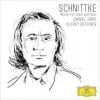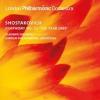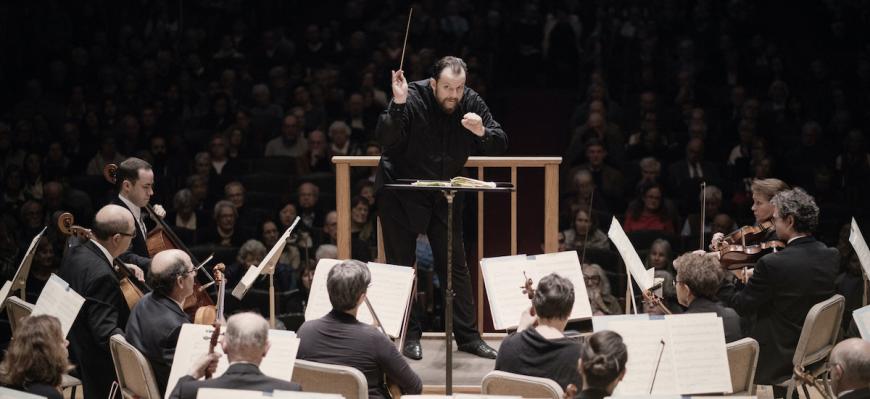
Andris Nelsons and the Boston Symphony Orchestra have been doing Deutsche Grammophon a service by working their way through what will be the label’s first complete cycle of the 15 Shostakovich symphonies by a single entity. You can put together a composite cycle — which DG did in a boxed set — dominated by Leonard Bernstein (Nos. 1, 6, 7, 9) and Neeme Järvi (2, 3, 11–15), with single entries from Myung-Whun Chung (4), Mstislav Rostropovich (5), André Previn (8), and Herbert von Karajan (10). But Nelsons’s cycle benefits from a unified point of view, along with consistently splendid playing and sound from Boston’s Symphony Hall.
With the Symphonies Nos. 4 through 11 already out in the world, the latest issue in the Nelsons/BSO cycle goes a long way towards chipping away at the outer symphonies, combining Nos. 1, 14, and 15 — plus Rudolf Barshai’s string-orchestra expansion of the String Quartet No. 8 — on a double-CD set.
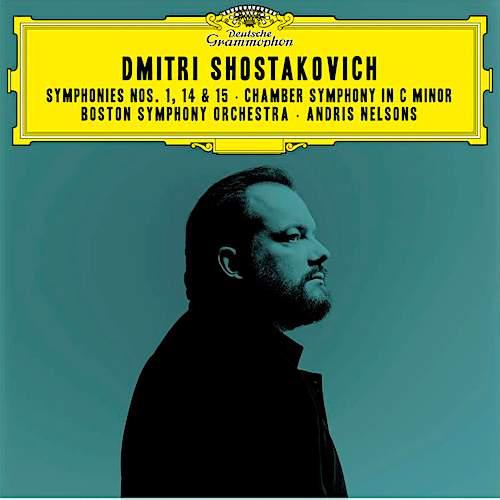
The contrasts are deliberate and stark — juxtaposing an astonishingly accomplished piece from a smart-alecky 19-year-old student turning in his senior project with three late works from the disillusioned, beleaguered, chronically ill composer who is obsessed with death yet determined to push on. There are, however, unifying features of the young and old Shostakovich; the playful and brooding sides of his personality are already operating in the First Symphony, and a careful listener will notice that the Fate leitmotif from Wagner’s Ring cycle turns up in the finales of both the First and 15th Symphonies.
Nelsons’s performance of the First Symphony has outbreaks of mischief amidst a superpolished surface, yet not much brooding in the first of Shostakovich’s many brooding, slow movements. Most of all, we feel the weight of the mighty BSO, particularly in the gangbusting outburst of the coda.
The 14th Symphony — actually a relentlessly pessimistic, often dissonant 11-part song cycle containing poems on the subject of death — is one of the great downers in the literature, and makes morbidly appropriate listening in a time of pandemic. Shostakovich intended listeners to leave the concert hall with the thought, “life is wonderful.” Well, yes, sure, but that’s a counterintuitive response that would require some serious mental jujitsu. Whenever I’ve left the concert hall after a performance of the 14th, my thoughts were of hopeless gloom and depression, and also what a terrific, vital piece of music this is.
Nelsons and company realize the piece’s grim power yet temper the blows just a bit. He has the right ideas and good tempos; it just lacks the last ounce of malice (check out Rostropovich’s wild, messy 1973 Moscow recording for a depth charge of fury and tears). Though the piece was scored for a chamber orchestra of 19 strings plus percussion, Nelsons reportedly doubled the number of strings to 38, and it sounds like twice that amount here. Nelsons also has some good singers on hand. When Bryn Terfel had to cancel due to “vocal fatigue,” the BSO brought in the Ukrainian bass Alexander Tsymbalyuk, who has the authentic deep Slavic timbre, somber and sonorous in the opening “De Profundis” section. Soprano Kristine Opolais gives us a raw Slavic tone unlike that in her performances of standard opera, but her inner diva nevertheless dramatizes the verses and she finds the humor in “Madam, Look!”
There are many ways of looking at the strange, semiautobiographical 15th Symphony. Some emphasize a toyshop of tricks and quotes (Maxim Shostakovich), or a sullen resigned quality (Vasily Petrenko), or high-powered virtuosity (Georg Solti), or mockery giving way to stark fear (Gennady Rozhdestvensky), or pervasive all-is-done pessimism (Valery Gergiev), or serenity (Kurt Sanderling), or a soft-focused combination of most of the above (Jesús López-Cobos). What I get from Nelsons is an objective, big-boned look at a piece of symphonic music, with heavyweight brass and big booms of the bass drum, muscular lower strings, with odd-numbered movements that move along briskly as the even-numbered ones are drawn out. Nothing metaphysical or philosophical — just a fine performance by a world-class orchestra in one of the world’s best halls.
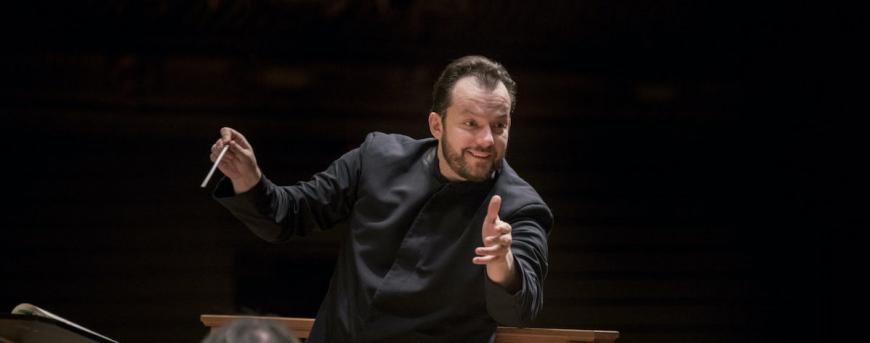
In the case of the Chamber Symphony in C Minor — alias the blown-up Quartet No. 8 — Nelsons does dig in more deeply than elsewhere in the set, again using a much larger string section that makes this sound like a symphony and never mind the word chamber. The second movement scherzo has huge furioso energy, the repeated knocks on the door in the fourth movement are as weighty as real pounding from the NKVD and MGB police that terrified Shostakovich in the Stalin years. And Nelsons achieves a chilling stillness in the pianissimos toward the final bars, adding to the downcast bleakness in the wake of the 14th Symphony on the doom-haunted disc two.
Not many more to go after this —Symphonies Nos. 2 and 12 are in the can (I heard Nelsons and the BSO do a sizzling No. 2 at Tanglewood two years ago this month, so that should be a winner), and only Nos. 3 and 13 remain. No. 3 and 13 were supposed to have been recorded during the cancelled BSO 2020–2021 season, along with the opera Lady Macbeth of the Mtsensk District. All three require a fully vaccinated chorus, and the Violin Concerto No. 1 is the only Shostakovich piece on the BSO 2021–2022 schedule, so they may have to wait awhile.


